An injection engine (engine with an injector, English electronic fuel injection engine) is a modern type, equipped with a fuel injection system that replaced engines with. Today, new gasoline cars are equipped exclusively with an injector, since this solution is able to ensure that the power plant meets the strict standards regarding efficiency and toxicity of exhaust gases.
The carburetor loses to the injector in terms of overall efficiency, since injection engines work more stable, the car gets improved acceleration dynamics. The injection unit consumes less fuel, the content of harmful substances in the exhaust is reduced, as the fuel burns more fully. The system control is fully automated (unlike the carburetor), that is, it does not require manual adjustment during operation. As for, the diesel fuel injection system on such engines has a number of design differences, although the general principle of operation of a diesel injector remains similar to gasoline counterparts.
Read in this article
What is the difference between an injection engine and a carburetor
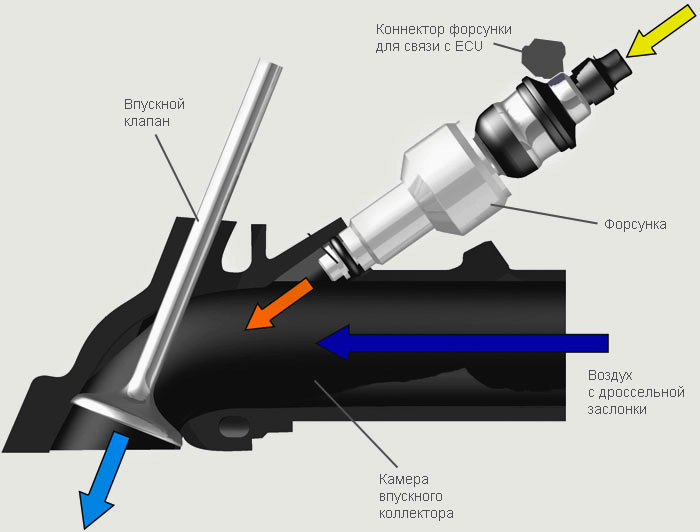

The injector is a fundamentally different way of supplying fuel to the combustion chamber compared to a carburetor. In other words, in the injection motor, the greatest design changes have been made. In a carbureted engine, gasoline is mixed with a certain amount of air in an external device (carburetor).
After the resulting fuel-air mixture is sucked into the engine cylinders. The injection engine has special injection nozzles that meteredly inject fuel under pressure, after which a portion of the fuel is mixed with air. If we compare the efficiency of fuel supply by an injector and a carburetor, an engine with an injector is up to 15% more powerful. Significant fuel savings are also noted in different engine operating modes.
Varieties of injectors
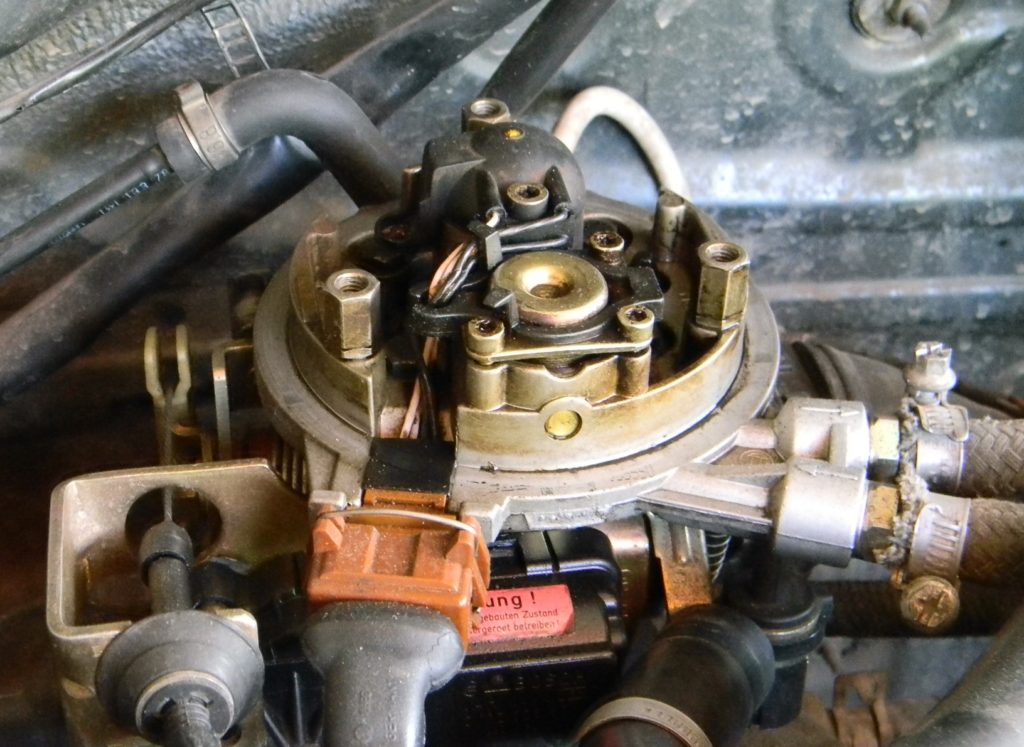

Fuel injection systems are divided into several subspecies:
- single point injection (single injection);
- distributed injection;
- direct (direct) injection;
This division directly depends on the total number of installed injectors, as well as on the place of injection of the fuel itself. The single point system is the earliest development and requires only one injector injector. In other words, there is one injector for all engine cylinders. This solution has a number of disadvantages, which led to its rapid disappearance.
The next stage in the development of the injector after mono-injection was the distributed injection, which means the presence of a manifold and individual nozzles that are installed above the intake valve of each cylinder. Direct fuel injection is the latest injector system. The principle of operation is that the nozzle is installed so as to supply fuel directly to the engine cylinder (directly to the combustion chamber), and not to the manifold. The cylinder heads became the location of the nozzles in this system. This system largely resembles the principle of fuel supply and mixture formation in diesel engines.
Also, each of the systems is additionally divided by the type of injection. With regard to distributed injection, such a solution can be simultaneous (all nozzles inject fuel). Also, injection can be pairwise-parallel (the nozzles open in pairs), when one nozzle starts opening before fuel injection, and the other before the exhaust stroke. Phased injection is also noted (the nozzle opens before the intake stroke) and direct injection directly into the cylinder.
How the injector is arranged and works
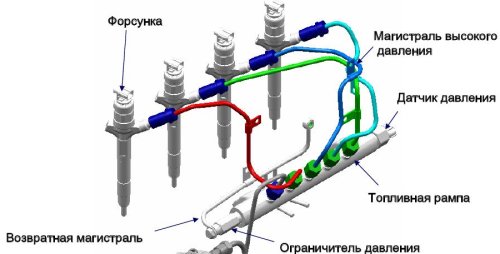
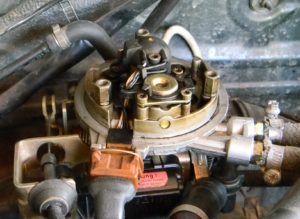
The injector device basically assumes the presence of the following basic system components:
- electronic control unit ();
- injection nozzles;
- fuel rail with pressure regulator;
- electronic sensors for temperature, throttle opening angle, etc.
For a better understanding of the principle of operation of the injector, let's take a superficial look at how the components of the system interact with each other using the example of a common type of injection engines with multipoint port injection. After turning the ignition key, power is supplied to the electric fuel pump, which is located in the fuel tank and is immersed in fuel. The specified pump supplies fuel to the fuel line under a certain pressure. The injector nozzles are installed in the fuel rail (rail), through which fuel is supplied to the injectors, and the injectors themselves are fixed on the intake manifold. A fuel pressure regulator is also installed in the rail, which serves to maintain the difference between the air pressure in the intake and in the injectors themselves.
Thanks to the installed sensors, the ECU controller receives information on the basis of which it is possible to synchronize the injection in accordance with the operating modes and conditions of the internal combustion engine. The control unit receives readings from the engine temperature sensor, oxygen sensor, (Hall sensor) and crankshaft sensor. This makes it possible to adjust the amount of fuel supplied to each cylinder, to flexibly and dynamically change the composition of the fuel-air mixture, etc.
In other words, for accurate fuel injection, it is necessary to supply fuel to the nozzles under pressure, which creates a gasoline pump in. Next, the ECU sends control pulses to the injectors. These pulses cause the nozzle to open for the desired period of time, which depends on the specific mode of operation of the engine, the load on the motor, the degree of pressure on the gas pedal and a number of other factors. Information about the duration of the pulses to the injectors and the required amount of fuel during injection is calculated by the ECU, taking into account the readings from electronic sensors.
Sensors capture various changes in engine operation and changing conditions, constantly transmitting signals to the control unit. This scheme allows you to spend a strictly defined amount of fuel during start-up, warm-up, idling, quiet or dynamic driving, etc.
The specified accuracy during fuel dosing is possible only due to the operation of the vehicle's control electronics in the form of a combination of sensors and an engine ECU. Microprograms are flashed in the control unit, and the operation itself is based on the so-called fuel cards. Sensors continuously provide information about the engine operation mode, vehicle speed, etc. The controller receives and processes the data, after which it determines the required number of fuel injections and their duration in time. Any changes in the operation of the internal combustion engine are read by sensors and force the ECU to dynamically make adjustments to the operation of the injector.
The outstanding environmental friendliness of the injector is made possible by the presence of an oxygen sensor (lambda probe). The specified sensor is located in the exhaust system and "evaluates" the state of the exhaust gases. Based on its readings, the ECU leans or enriches the air-fuel mixture (changes the ratio of the amount of air and fuel in the working mixture) while the engine is running in most standard modes.
Advantages and disadvantages of injection engines
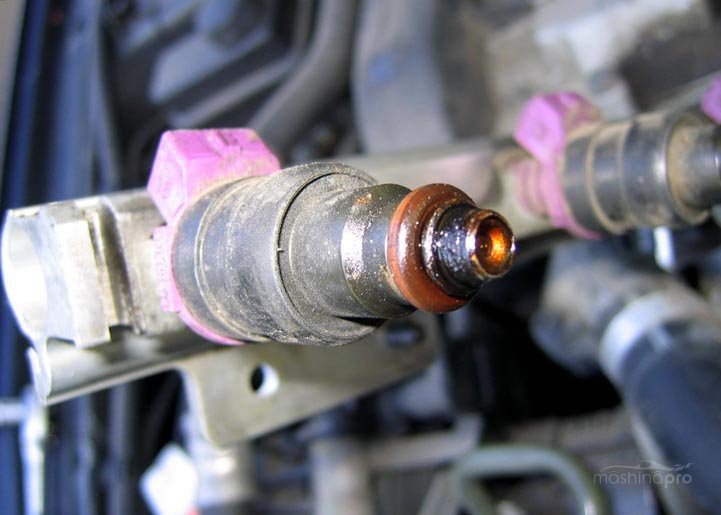
If you compare an injector with a carburetor, then the first solution is more convenient to operate, but definitely more expensive and more difficult to repair. A simple carburetor is a mechanical device that requires periodic maintenance. Engines with a carburetor coke more strongly, can be difficult to start in the cold season, overuse fuel, the engine can also work unstably in extreme heat, etc.
The carburetor has a smaller resource compared to the injector. For this reason, the carburetor must be constantly cleaned, flushed and adjusted. The indisputable advantage of the carburetor is its simplicity and unpretentiousness to the quality of fuel, thanks to which almost every car owner in his garage can learn how to repair and adjust the carburetor with his own hands.
In the case of injection internal combustion engines, the main advantages are: economy, easy engine start and engine stability in all conditions, as well as low fuel consumption. A motor with an injector responds better to the gas pedal, it does not fill up with gasoline so often and strongly, the engine is less susceptible. At the same time, it is much more difficult to determine the malfunction of the injector in the event of a malfunction.
Frequent malfunctions of the injector
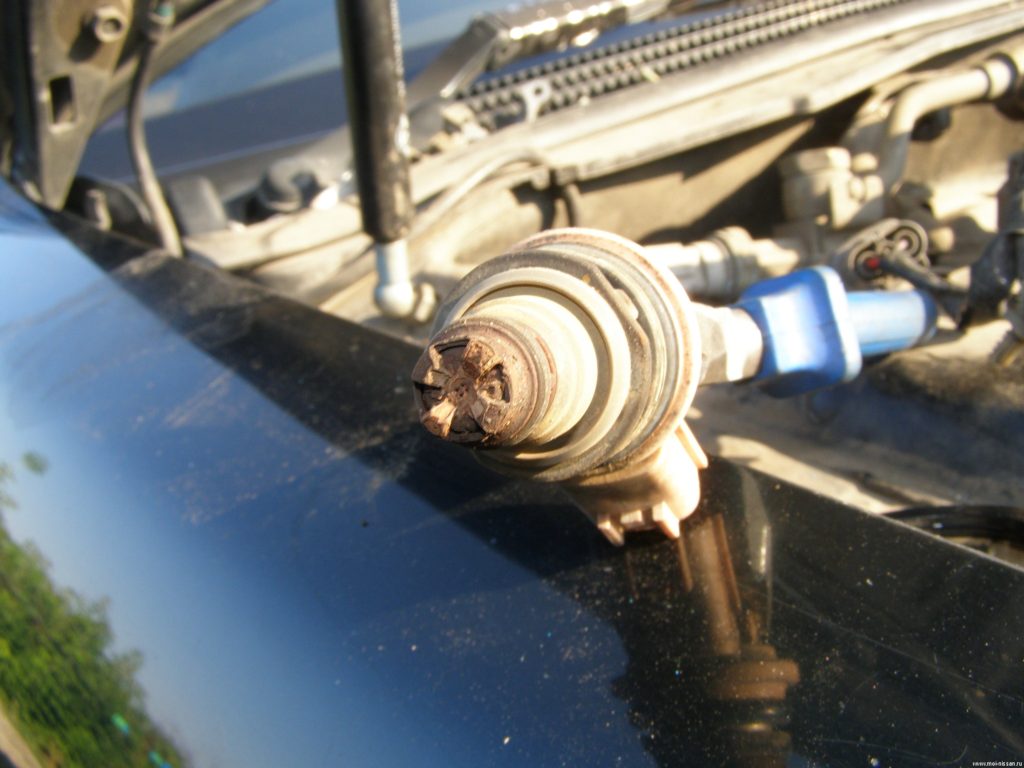
Since the injector is a complex multi-component system, individual elements may fail over time. The main task of the injector is the highest possible efficiency of fuel combustion, which is achieved by maintaining a strictly defined composition of the working mixture of fuel and air.
- As a result, any failure in the operation of electronic sensors leads to an imbalance in the operation of the entire injection system, the engine may or may not start, a change is noted, etc. In some cases, the ECU can put the engine into emergency mode. The power unit in such a situation does not gain momentum, “check” is lit on the dashboard, etc.
- Another cause of injector malfunctions is contamination of the filter elements in the fuel supply system or the injection nozzles themselves as a result of the use of poor quality gasoline. To maintain performance, the fuel filter must be changed in a timely manner. No less attention, especially on cars with a mileage of more than 50-70 thousand km, deserves a fuel pump mesh filter. Specified . It is also desirable to wash the fuel tank once every few years in parallel with the replacement or cleaning of said fuel pump coarse filter.
Note that it is important to identify and fix the malfunction of the injector in a timely manner, since failures in its operation can significantly worsen the general condition of the internal combustion engine and lead to other breakdowns. With regard to clogged fuel injectors, in this case, the engine starts worse, loses power and starts to consume more fuel. Violation of the shape of the fuel spray jet (especially in engines with direct injection) leads to local overheating, etc.
- Also, the injectors can “pour” fuel, that is, they do not close after the impulse from the ECU stops. In this case, excess fuel enters the combustion chamber, then it can enter the exhaust system and the engine lubrication system through leaks at the installation sites. In such situations, the entire engine suffers greatly, as gasoline dilutes the oil and the lubrication of loaded parts deteriorates. The presence of fuel in the exhaust system disables the catalytic converter (catalyst), which cleans the exhaust gases from harmful compounds.
To prevent malfunctions of the injector, the nozzles must be cleaned periodically. The fact is that the presence of fractions and impurities in gasoline gradually pollutes the injectors, which reduces their performance, and also violates the quality of the fuel spray. There are two ways to clean the nozzles: with removal or directly on the machine. The procedure for cleaning injector nozzles on a car assumes that a special flushing liquid is passed through the injectors to clean the injector. The method consists in the fact that the fuel line is disconnected from the fuel rail, after which, instead of the gasoline pump, a special compressor instead of the gasoline pump starts pumping the flushing fluid into the system.
Another option for cleaning the injector is cleaning with the removal of nozzles in an ultrasonic bath or on a special washing stand. As for ultrasound, the nozzles are placed in a special apparatus or bath, where the wave vibrations "break" the deposits. Flushing of injectors with removal on the stand is a procedure when the operation of the injectors in the engine is simulated, while washing liquid is passed through them instead of gasoline. Note that each of these methods has its own advantages and disadvantages, which can be read in our separate article.
The operation of a car on fuel in the conditions of the CIS obliges the owner to replace the fuel filter every 10-15 thousand km. mileage and periodic cleaning of injector nozzles. It is desirable to perform this procedure every 30-35 thousand km. run. Additionally, it is recommended to purchase fuel only at large gas stations with a good reputation.
For prevention purposes, you can use special fuel system cleaners that are poured into the fuel to keep the injector clean. Note that these fuel additives should only be used on new vehicles or after deep cleaning of the fuel system. If the nozzles are already dirty, then it is necessary to flush the injector separately.
You should not wait for the moment when symptoms of injector contamination appear in the form of problems with engine operation. It is better to flush the nozzles in advance. For example, before every second scheduled maintenance. Please note that in the case of using the cleaning method with flushing fluids, it is optimal to carry out this procedure before changing the engine oil.
Finally, we add that a decrease in the performance of injectors can be caused by malfunctions of the fuel pump. In this case, it is necessary to measure the pressure in the fuel rail. If the indicators are below the recommended ones, then it will be required. It should also be borne in mind that the installation of more efficient injectors at the time may require the mandatory replacement of the fuel pump.







